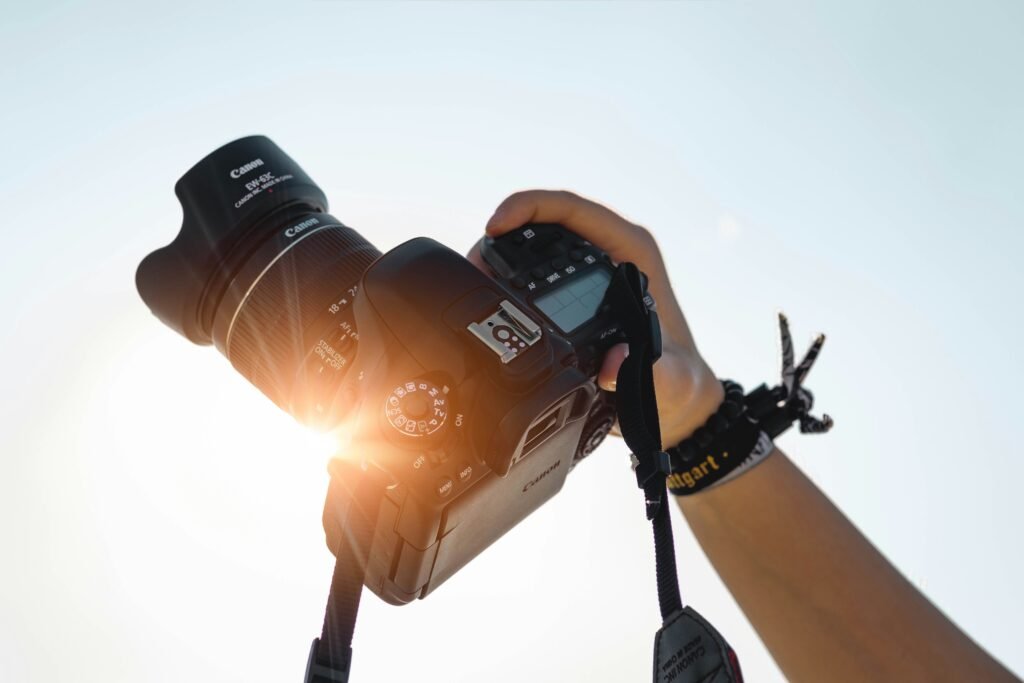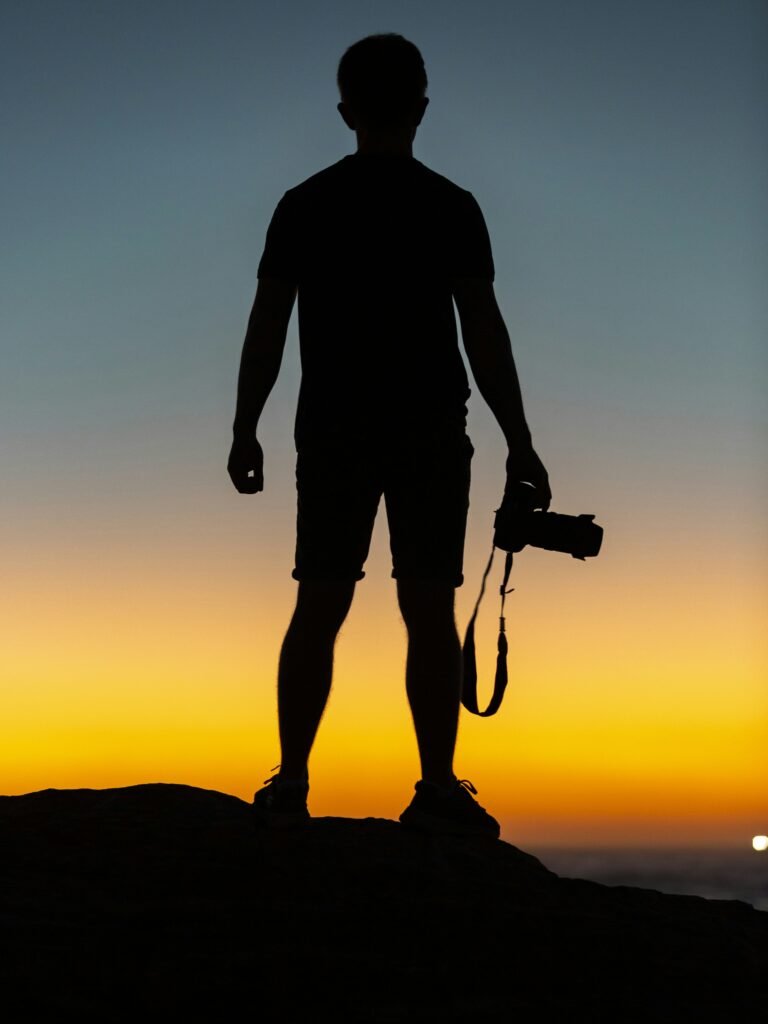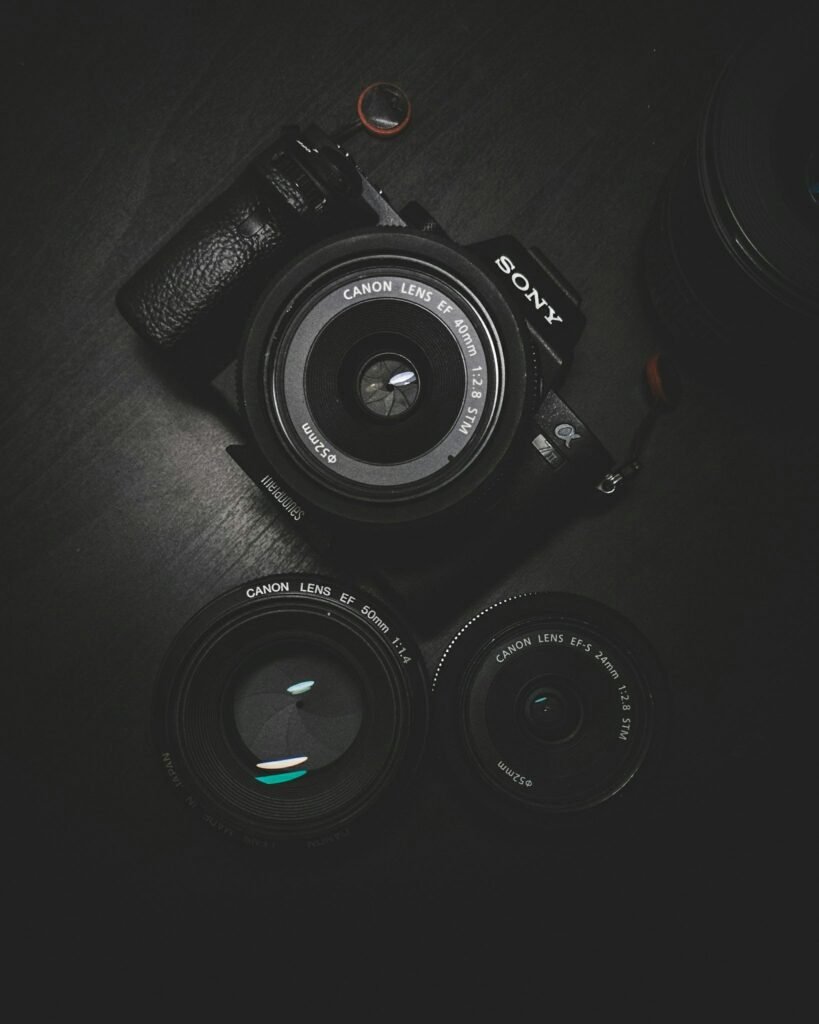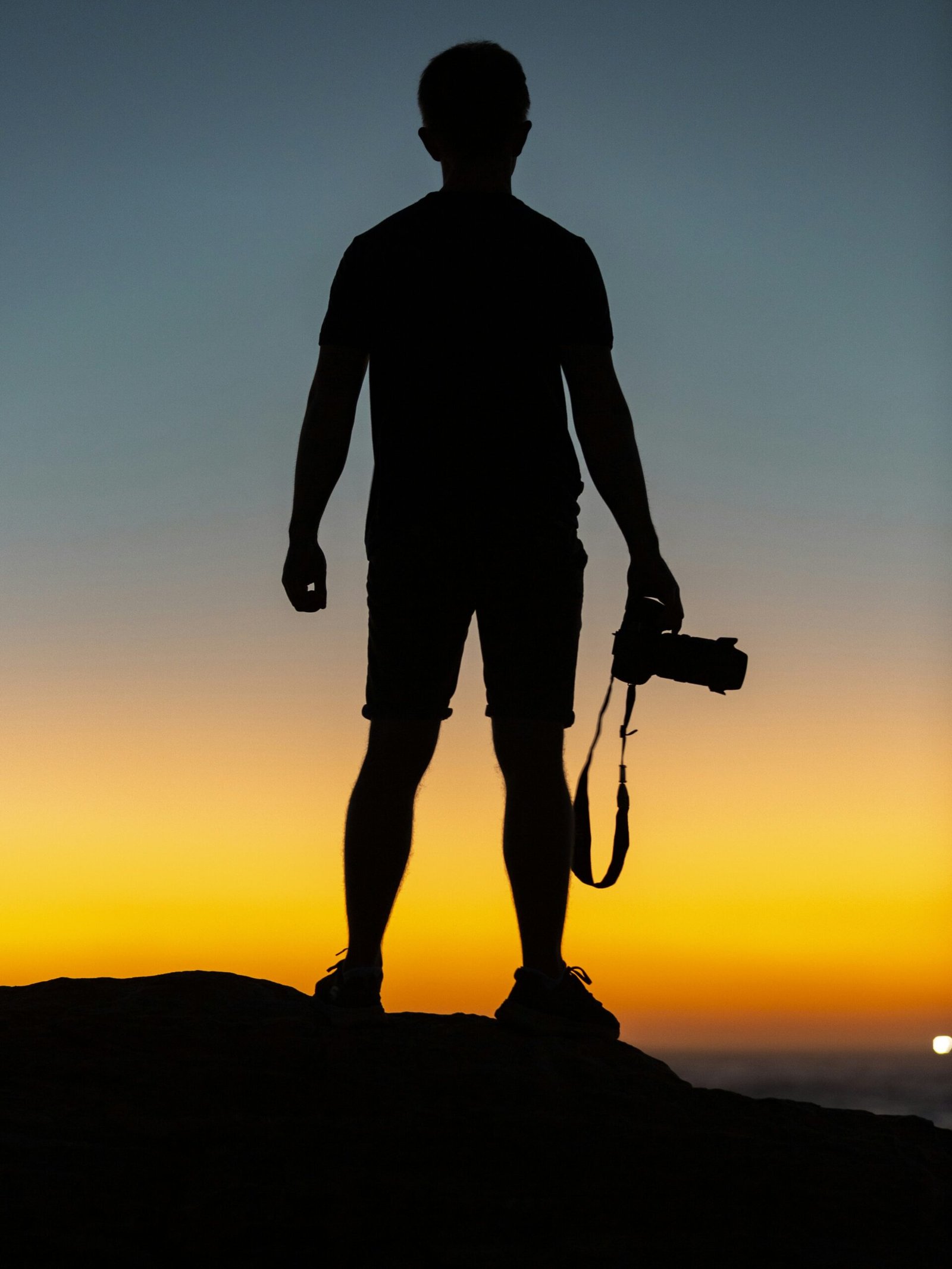Are you tired of taking blurry, uninspiring photos with your iPhone? Look no further! In this article, you will discover simple and effective techniques to elevate your iPhone photography game. From mastering composition and lighting to utilizing editing tools, we will break down the key elements that will help you take stunning, professional-looking pictures with your iPhone. Get ready to capture those picture-perfect moments like a pro!

Understanding Your iPhone Camera
Your iPhone camera is a powerful tool that can help you capture stunning photos. By understanding the basics, exploring different camera modes, and understanding the settings and options, you can take your iPhone photography skills to the next level.
Knowing the basics of your iPhone camera
To start taking great photos with your iPhone, it’s important to understand the basics of your camera. Your iPhone typically comes with a rear camera and a front camera, both of which can be used to capture different types of shots.
The rear camera is often the primary camera used for capturing most photos. It usually has a higher megapixel count and offers better quality images. The front camera, on the other hand, is ideal for selfies and video chats.
Additionally, your iPhone camera has features like focus, exposure, and zoom. These features can be adjusted to help you capture clear and well-exposed images. Familiarize yourself with these basic functions before diving into more advanced techniques.
Exploring the different camera modes
Your iPhone camera offers various modes that can be used to enhance your photography. Some of the most popular modes include Photo, Portrait, Video, Time-lapse, and Square.
The Photo mode is the default setting and is perfect for capturing still images. It allows you to adjust settings such as exposure, focus, and flash to get the desired photo.
Portrait mode is great for capturing stunning portraits with a blurred background effect. It uses depth-sensing technology to create a professional-looking bokeh effect, which adds depth and dimension to your photos.
Video mode allows you to shoot high-quality videos in different resolutions. Experiment with different video settings to capture memorable moments in stunning detail.
Time-lapse mode lets you capture a series of photos over a set period and merges them into a fast-paced video. This mode is ideal for capturing sunsets, bustling city streets, or the blooming of a flower.
Square mode captures images in a square format, perfect for sharing on social media platforms like Instagram. This mode automatically crops your photos to fit the square frame.
Understanding the settings and options
Your iPhone camera comes with a range of settings and options that can be tweaked to enhance your photos. These settings include exposure, focus, flash, HDR, and gridlines.
Exposure determines how light or dark your photo appears. You can adjust it manually or use the auto-exposure feature by tapping on the focus area on the screen. Experiment with different exposure levels to capture the perfect shot in different lighting conditions.
Focus is essential for getting sharp and clear images. By default, the camera automatically focuses on the subject in the frame. You can manually adjust the focus by tapping on the screen to focus on a specific area or object.
Flash can be used to illuminate your subject in low-light situations. It’s important to note that the built-in flash on your iPhone might not always produce desirable results. Experiment with natural lighting and other alternatives before relying on the flash.
HDR (High Dynamic Range) mode is perfect for capturing scenes with contrasting lights and shadows. When enabled, your iPhone takes multiple photos at different exposures and combines them to create a well-balanced and detailed image.
Gridlines can be enabled on your camera, which can help you compose your shots more effectively. These gridlines divide your screen into thirds, following the rule of thirds composition technique. We’ll dive deeper into composition techniques in the next section.
By understanding and experimenting with these settings and options, you’ll have more control over your iPhone camera, allowing you to capture stunning photos in various situations.
Composition Techniques
Mastering composition is essential for capturing visually appealing and balanced photos. By utilizing composition techniques, such as the rule of thirds, leading lines, symmetry and patterns, foreground and background, and framing, you can take your iPhone photography to the next level.
Rule of Thirds
The rule of thirds is a basic principle of composition that can help you create well-balanced and visually appealing photos. Imagine dividing your photo into nine equal sections by drawing two horizontal lines and two vertical lines. The four points of intersection are where the main subjects of your photo should be placed.
By placing your subject along these lines or at the points of intersection, you create a dynamic and visually interesting composition. This technique adds balance and guides the viewer’s eye through the photo.
Leading Lines
Leading lines are lines within your photo that draw the viewer’s eye towards the main subject or point of interest. These lines can be found naturally in the environment or created intentionally.
Examples of leading lines can include roads, paths, fences, or any other line that guides the viewer’s eye. By incorporating leading lines into your composition, you can create depth and a sense of movement in your photos.
Symmetry and Patterns
Symmetry and patterns can add a sense of harmony to your photos. Look for symmetrical subjects or scenes and position them centrally in your frame. They can be architectural structures, natural landscapes, or even reflections in water.
Patterns, on the other hand, can be found in various forms, such as repeating shapes, textures, or colors. Capturing patterns in your photos can create visual interest and draw the viewer’s eye into the image.
Foreground and Background
Consider the foreground and background elements when composing your photos. By including interesting foreground elements, such as flowers, rocks, or people, you can add depth and a sense of scale to your photos.
The background is equally important as it helps to set the context and adds depth to the overall composition. Pay attention to distracting elements or cluttered backgrounds that might take away from your main subject. Adjust your position or use depth of field techniques to achieve a pleasing background.
Framing
Framing is a technique that involves using elements within the scene to frame your subject. These elements can be archways, windows, tree branches, or anything that creates a frame around your subject.
Framing adds depth and context to your photos, drawing the viewer’s eye towards the subject and creating a sense of storytelling. Experiment with different framing options to create engaging and visually striking compositions.
By mastering these composition techniques, you can add visual interest and depth to your iPhone photos, making them more captivating and professional-looking.

Utilizing Lighting
Lighting plays a crucial role in photography, and understanding how to best utilize light can greatly improve your iPhone photos. Whether you’re shooting in natural light or using artificial lighting, knowing how to work with different lighting conditions can make a significant difference in the quality of your shots.
Natural light vs. artificial light
Understanding the characteristics of natural and artificial light can help you determine the best lighting conditions for your photos. Natural light, such as sunlight or diffused daylight, offers a softer and more flattering light source. It can enhance colors and textures, creating more natural-looking photos.
Artificial light, on the other hand, can come from various sources like indoor lighting, street lamps, or even the flash on your iPhone. It tends to be harsher and less forgiving, often resulting in unflattering shadows and color casts. However, with some creativity and adjustments, artificial light can be used to create unique and dramatic effects.
Golden hour photography
Golden hour refers to the period shortly after sunrise and before sunset when the lighting is warm, soft, and golden. It’s considered the optimal time for outdoor photography due to the beautiful, diffused light.
During golden hour, the sun is closer to the horizon, which creates a soft and warm glow. This light can add depth, warmth, and a magical quality to your photos. Capture landscapes, portraits, or any subject of interest during this time to achieve stunning results.
Avoiding harsh shadows
Harsh shadows can be a challenge, especially when shooting in bright sunlight or under strong artificial lighting. These shadows can obscure details, create unflattering contrasts, or cast unwanted distractions on your subject.
To avoid harsh shadows, consider shooting during the golden hour or in shaded areas where the light is diffused. You can also use reflectors or diffusers to soften the light or adjust the exposure and shadows settings in post-processing.
Using HDR mode
HDR (High Dynamic Range) mode on your iPhone camera can be particularly useful when dealing with high-contrast scenes. It helps capture a broader range of light and dark tones by combining multiple exposures into a single, well-exposed image.
When shooting in HDR mode, your iPhone captures three separate images at different exposures – one underexposed, one overexposed, and one properly exposed. It then combines these exposures to create a final image with better detail in both the highlights and shadows.
Experiment with HDR mode to capture scenes with bright skies and darker foregrounds, or situations where there is a vast difference in light between different elements of the composition.
Experimenting with low-light photography
One of the challenges of iPhone photography is shooting in low-light conditions. However, with some experimentation and the right techniques, you can capture impressive low-light photos.
Start by keeping your iPhone steady to avoid blurry images. Use a tripod or rest your iPhone on a stable surface whenever possible. You can also enable the gridlines on your camera to help with alignment and stabilization.
Another technique to consider is adjusting the exposure manually to allow more light into the photo. Additionally, experimenting with the Night mode on newer iPhone models can greatly enhance the quality of your low-light photos.
Lastly, consider using the flashlight on your iPhone creatively. Instead of directly pointing it at your subject, try bouncing it off a nearby wall or ceiling to create a softer and more natural-looking light source.
By understanding and utilizing different lighting conditions, you can greatly enhance the visual impact of your iPhone photos. Whether you’re shooting in natural light or experimenting with artificial lighting, lighting can make or break a photo.
Mastering Focus and Exposure
The focus and exposure settings on your iPhone camera play a vital role in capturing sharp and well-exposed photos. By understanding how to control focus manually, adjust exposure levels, use AE/AF Lock, and utilize exposure compensation, you can take full control of your iPhone camera and capture professional-looking shots.
Controlling focus manually
The default autofocus feature on your iPhone camera does an excellent job of determining what to focus on in a scene. However, in certain situations, you may want to take control of the focus manually to achieve a specific effect.
To manually control the focus, tap on the area of the screen where you want to focus. The camera will adjust the focus to that area, ensuring it is sharp and clear. This is particularly useful when shooting subjects that are not in the center of the frame or when you want to emphasize a specific object in the composition.
Adjusting exposure levels
Exposure refers to the amount of light that reaches the camera sensor. Adjusting exposure levels can help ensure your photos are properly lit and well-exposed.
To adjust exposure on your iPhone camera, tap on the area of the screen where you want to adjust the exposure. A yellow box will appear, indicating the focus and exposure area. You can then swipe up or down to adjust the exposure manually.
Increase the exposure to brighten up a dark scene or decrease it to darken an overexposed scene. Be mindful of the overall composition and the desired mood of your photo when making exposure adjustments.
Using AE/AF Lock
AE/AF (Auto Exposure/Auto Focus) Lock is a feature that allows you to lock the focus and exposure settings on your iPhone camera. This is particularly useful when shooting a subject that is off-center or when you want to capture multiple shots with the same exposure settings.
To use AE/AF Lock, simply tap and hold on the area of the screen where you want to lock the focus and exposure. After a few seconds, you’ll see a yellow AE/AF Lock box appear on the screen. This indicates that the focus and exposure are now locked.
You can then recompose your shot without the worry of your iPhone camera auto-adjusting the focus or exposure. This feature is especially handy in situations where the lighting conditions might change quickly or when shooting challenging subjects.
Utilizing exposure compensation
Exposure compensation allows you to manually adjust the exposure levels of your photos. This is particularly useful when you want to override the default exposure settings of your iPhone camera.
To access exposure compensation, simply tap on the screen to activate the focus and exposure box, then swipe up or down on the screen. Swipe up to increase the exposure value and make the photo brighter, or swipe down to decrease the exposure and create a darker effect.
Exposure compensation is beneficial when shooting in challenging lighting conditions or when you want to add a creative touch to your photos. Experiment with different exposure levels to achieve the desired effect and mood in your images.
By mastering focus and exposure, you’ll have greater control over the outcome of your iPhone photos. Whether you prefer to manually control focus and exposure, utilize AE/AF Lock, or experiment with exposure compensation, these techniques will help you capture sharp and well-exposed images.

Utilizing the Gridlines
Activating the gridlines on your iPhone camera can greatly assist in composing your photos, ensuring proper alignment, and achieving visually balanced images. Gridlines follow the rule of thirds composition technique, which helps you create more visually appealing and well-composed shots.
Enabling gridlines on your camera
To enable gridlines on your iPhone camera, go to the Settings app, scroll down and tap on “Camera.” Under the “Composition” section, toggle on the “Grid” option. Once enabled, you’ll see gridlines overlaying the camera viewfinder.
Using the gridlines for framing and alignment
Gridlines divide your screen into nine equal sections, with two horizontal lines and two vertical lines. The four points of intersection where these lines meet are known as the “power points.” These gridlines and power points serve as guides to help you compose your photos more effectively.
When framing your shot, try positioning the main subject or points of interest along these gridlines or power points. This creates a more balanced and visually appealing composition by adhering to the rule of thirds.
For example, when capturing a landscape, align the horizon with one of the horizontal gridlines. Place elements of interest, such as a tree or mountain, along the vertical gridlines or power points. This technique draws the viewer’s eye through the photo and adds depth to the image.
Balancing horizons using the gridlines
One common challenge in photography is capturing a straight horizon in landscape shots. Crooked horizons can be distracting and take away from the overall composition of the photo.
The gridlines on your iPhone camera can be particularly helpful in aligning and balancing horizons. Ensure the horizon aligns with one of the horizontal gridlines to achieve a straight and balanced composition.
If your horizon appears slightly slanted, use the gridlines as a reference and adjust your position or angle accordingly. This simple technique can greatly improve the overall impact of your landscape shots.
By enabling and utilizing the gridlines on your iPhone camera, you can enhance the composition and alignment of your photos, ensuring a more visually pleasing and balanced outcome.
Capturing Professional-Looking Portraits
Capturing stunning portraits with your iPhone is easier than you might think. By considering the right lighting, utilizing portrait mode, using the self-timer and tripod, and posing and directing your subject, you can take portrait photography to the next level.
Choosing the right lighting
Lighting plays a crucial role in portrait photography. Optimal lighting can enhance the subject’s features, create flattering highlights and shadows, and add depth and dimension to the photo.
For outdoor portraits, consider shooting during the golden hour for soft and warm natural light. If shooting indoors, choose a well-lit room with diffused light or utilize artificial light sources like lamps or studio lighting.
Avoid harsh direct sunlight or strong artificial lighting that can create unflattering shadows or blow out the highlights. Experiment with different lighting conditions to achieve the desired mood and look for your portraits.
Utilizing portrait mode
Portrait mode is a valuable feature available on some iPhone models that can help you achieve professional-looking portraits with a beautiful bokeh effect. This effect blurs the background, creating a shallow depth of field and drawing attention to the subject.
When using portrait mode, ensure the subject is well-lit and positioned within a reasonable distance from the camera. The iPhone will indicate if the subject is too close or too far for optimal results. Follow the on-screen prompts and adjust your distance accordingly.
Experiment with different backgrounds, poses, and compositions to create engaging and visually striking portraits. The blurring effect created by portrait mode can give your photos a high-end, professional look.
Using the self-timer and tripod
The self-timer feature on your iPhone camera can be handy for capturing self-portraits or including yourself in group shots. This feature allows you to set a countdown timer before the photo is taken, giving you time to position yourself or join the group.
To use the self-timer, open the camera app, set up the desired composition, then select the self-timer icon, usually represented by a clock. Choose the timer duration, such as 3 or 10 seconds, and tap the shutter button. Get in position, and your iPhone will capture the photo after the countdown.
Using a tripod along with the self-timer can provide even more stability and flexibility in capturing self-portraits or group shots. Tripods allow you to position your iPhone at various angles, adjust the height, and ensure a steady shot without the need for holding the phone.
Posing and directing your subject
Posing and directing your subject can greatly influence the outcome of your portraits. Communication and collaboration are key to capturing natural and authentic expressions.
Encourage your subject to relax and be themselves in front of the camera. Experiment with different poses, angles, and expressions to find what works best for them. Give simple directions or prompts to evoke different emotions or capture specific moments.
Remember to pay attention to details such as eye contact, hand placement, and body language. These small adjustments can greatly enhance the overall composition of your portrait.
By considering lighting, utilizing portrait mode, using the self-timer and tripod, and posing and directing your subject, you can capture professional-looking portraits with your iPhone.
Exploring Different Perspectives
To add depth and creativity to your iPhone photos, it’s important to explore different perspectives. By experimenting with angles, taking shots from above, getting close-ups and detail shots, and using reflections creatively, you can capture unique and visually interesting images.
Experimenting with angles
Don’t be afraid to get creative and experiment with different angles when shooting with your iPhone. Angles can greatly influence the overall composition and the story you want to tell with your photos.
Try shooting from unusual low angles to make your subject appear larger than life. This works particularly well for photographing children or pets. Conversely, shooting from high angles can create an interesting and alternative perspective, perfect for capturing landscapes, architectural details, or even food.
Change your perspective and step out of your comfort zone. By taking photos from unique angles, you can capture unconventional and visually compelling images.
Taking shots from above
Shooting from above can provide a different viewpoint and offer a fresh perspective on your subjects. Whether you’re photographing food, flat lays, or people, taking shots from above can create visually interesting compositions.
When shooting food or flat lays, ensure you have adequate lighting and a clean background. Play with different arrangements, textures, and colors to create visually appealing images.
When photographing people from above, you can capture unique facial expressions, body poses, or interactions. Experiment with different distances and angles to find the right composition and capture candid moments.
Getting close-ups and detail shots
Getting up close and personal with your subject can reveal intricate details and textures that are often overlooked. Whether you’re photographing flowers, insects, or everyday objects, macro or close-up photography allows you to explore the beauty in the small things.
To capture close-ups and detail shots with your iPhone, activate the macro mode or use the magnification feature if available. Steady your phone or use a tripod to ensure sharp focus and take your time to frame and compose the shot.
Pay attention to lighting and background choices to enhance the details and textures in your close-up photos. Experiment with different angles and perspectives to highlight the most captivating aspects of your subject.
Using reflections creatively
Reflections can add an element of interest and creativity to your iPhone photos. Whether it’s capturing reflections in water, glass, or other reflective surfaces, they can create a sense of depth and a unique visual experience.
Look for reflections in puddles, lakes, or windows, and position your subject or frame your composition in a way that incorporates both the reflection and the actual subject. This technique can add a surreal or abstract quality to your images.
Experiment with different lighting conditions to enhance the reflections. For example, shooting during golden hour or when the sky is overcast can create stunning reflections with warm or diffused light.
By exploring different perspectives, getting creative with angles, capturing shots from above, focusing on close-ups and detail shots, and using reflections creatively, you can take your iPhone photography to new and exciting heights.
Editing and Enhancing Photos
Editing and enhancing your iPhone photos can help elevate their quality and visual impact. Your iPhone comes with built-in editing tools that allow you to adjust exposure, brightness, contrast, apply filters and effects, crop, and remove unwanted objects.
Using built-in editing tools
Your iPhone camera app includes a range of built-in editing tools that can help you refine and enhance your photos. Open the Photos app and select the photo you want to edit. Tap the “Edit” button at the top right corner of the screen to access the editing options.
From there, you can adjust various aspects of your photo, such as exposure, brightness, contrast, saturation, and more. Experiment with different settings to achieve the desired look and feel.
Adjusting exposure, brightness, and contrast
Exposure, brightness, and contrast are fundamental elements to consider when editing your iPhone photos. These adjustments can help you correct underexposed or overexposed images, enhance details, and create a balanced and visually appealing composition.
Using the exposure adjustment slider, increase or decrease the overall brightness of your photo. This can help bring out details in the shadows or tone down overly bright highlights.
The brightness adjustment slider can be used to fine-tune the overall brightness of your image. Increase the brightness to make the photo appear lighter, or decrease it for a darker and more dramatic effect.
Adjusting the contrast slider can help you enhance the tonal range of your photo, making it look more vibrant and lively. Increasing the contrast can add definition and make your subject stand out, while decreasing it can create a softer and more muted look.
Experiment with these adjustments to find the right balance and enhance the overall quality of your photos.
Applying filters and effects
Filters and effects can add a personal touch and unique style to your iPhone photos. Your iPhone camera app offers a range of filters that can instantly transform the look and mood of your images.
To apply a filter, select the photo you want to edit, tap “Edit,” and then tap the filters icon (usually represented by three overlapping circles). Scroll through the filter options and select the one that best suits your photo.
Additionally, you can fine-tune the strength of the filter using the intensity slider. Slide to the left for a subtle effect or to the right for a more pronounced look.
Experiment with different filters and effects to find your preferred style. Remember, filters should enhance your photos, so choose those that complement the subject and overall composition.
Cropping and straightening photos
Cropping and straightening are simple yet effective editing techniques that can greatly enhance the overall composition and focus of your iPhone photos.
To crop a photo, select the image you want to edit, tap “Edit,” and then tap the crop icon (usually represented by a square). Drag the edges of the cropping frame to select the desired composition. You can also choose from pre-set aspect ratios or adjust the cropping frame manually.
Straightening a photo is helpful in correcting the level of the horizon or adjusting the alignment of architectural structures. In the editing mode, tap on the cropping icon, then on the straighten icon (usually represented by a level). Use the slider or rotate the dial to straighten the photo.
By cropping and straightening your photos, you can eliminate distractions, create a more focused composition, and ensure your image is visually appealing and balanced.
Removing unwanted objects with retouching tools
Retouching tools can be used to remove unwanted objects or blemishes from your iPhone photos. They help clean up your images and create a more polished and professional look.
To access the retouching tools, select the photo you want to edit, tap “Edit,” and then tap the retouching icon (usually represented by a bandage or healing brush). Brush over the areas you want to remove or retouch, and watch as your iPhone automatically blends and smooths out the imperfections.
These tools are particularly useful for removing dust spots, power lines, or distracting elements that may take away from the overall composition. Take care when using retouching tools to ensure a natural-looking result.
By utilizing the built-in editing tools on your iPhone, adjusting exposure, brightness, and contrast, applying filters and effects, cropping and straightening your photos, and using retouching tools selectively, you can enhance the quality and visual appeal of your images.
Making the Most of Burst Mode
Burst mode on your iPhone camera allows you to capture a series of photos in quick succession, perfect for capturing fast-moving subjects or creating dynamic photo sequences.
Understanding burst mode
Burst mode is ideal for situations where you need to capture a precise moment or freeze fast-paced action. By holding down the shutter button, your iPhone will continuously capture photos in rapid succession.
To activate burst mode, open the camera app and press and hold the shutter button. Your iPhone will continue to take photos as long as you hold the button down or until the burst mode buffer is full.
Capturing fast-moving subjects
Burst mode is particularly useful for capturing fast-moving subjects, such as sports events, wildlife, or even children at play. It allows you to capture split-second moments that may otherwise be missed with a single shot.
To capture fast-moving subjects effectively, keep your iPhone steady and follow the subject’s movement with the camera. Burst mode will capture multiple frames, increasing the chances of capturing the perfect shot.
After capturing a burst of photos, review them to select the best shot or shots that capture the desired moment. You can then delete the unwanted photos to declutter your camera roll and save storage space.
Selecting the best shot from a burst
To select the best shot from a burst, open the Photos app and locate the burst of photos you want to review. Tap on the burst to open it, and you’ll see a thumbnail view of all the photos captured in that burst.
You can swipe through the photos to review them individually or tap “Select” to view them in a larger format. Use your finger to swipe left or right to navigate through the burst and choose the photos you want to keep.
Once you’ve selected the best shot(s), tap “Done” to save them to your photo library. The remaining photos in the burst will be automatically deleted, helping you declutter your camera roll.
Creating dynamic photo sequences
Burst mode can also be used creatively to create dynamic photo sequences. This technique is particularly effective for capturing actions that occur over a short period, such as dance moves, sports sequences, or even the stages of a baking recipe.
To create a dynamic photo sequence, activate burst mode and capture a series of photos as the action unfolds. Ensure you keep your iPhone steady and follow the movement to maintain consistency across the sequence.
After capturing the burst of photos, review them and select the frames that best represent the progression of the action. You can then use photo editing software or apps to create a collage or combine the frames into a single image that tells a story.
By utilizing burst mode, you can increase your chances of capturing the perfect shot, freeze fast-moving action, and create dynamic photo sequences that showcase the flow and progression of events.
Utilizing Third-Party Camera Apps
While the built-in camera app on your iPhone offers a range of features and settings, there are also third-party camera apps available that can further enhance your photography experience. These apps offer advanced camera features, manual controls, and additional editing tools.
Exploring popular camera apps
There are numerous camera apps available for download on the App Store, each offering unique features and functionalities. Some popular camera apps include ProCamera, Camera+, Halide, and VSCO.
ProCamera is a comprehensive camera app that provides manual controls, RAW support, advanced editing tools, and real-time preview options. It offers a range of features for both beginners and advanced photographers.
Camera+ offers manual controls, image stabilization, and various shooting modes. It also includes a range of editing tools and filters to enhance your photos directly within the app.
Halide is a powerful camera app that offers manual controls, RAW support, and advanced features. It provides a user-friendly interface and intuitive controls, making it ideal for users who want more control over their iPhone camera.
VSCO is a popular app among photography enthusiasts and offers a range of creative filters, editing tools, and social sharing features. It allows you to capture and edit photos with professional-grade tools and share them with the VSCO community.
Unlocking advanced camera features
Third-party camera apps often offer advanced camera features that can help you push the limits of your iPhone photography. These features may include manual controls for adjusting exposure, focus, and ISO, as well as advanced shooting modes like long exposure or pro mode.
By exploring and familiarizing yourself with these advanced camera features, you can take advantage of the full capabilities of your iPhone camera and capture unique and stunning photos.
Experimenting with manual controls
Manual controls give you full control over various aspects of your iPhone camera, allowing you to fine-tune settings to achieve the desired look and feel of your photos.
When using third-party camera apps with manual controls, you can adjust settings like exposure, focus, white balance, and ISO manually. This level of control is particularly useful in challenging lighting conditions or when you want to create specific effects.
Experiment with different settings and combinations to understand how they affect your photos. Take your time to learn the nuances of manual control, and with practice, you’ll become more proficient in capturing the exact image you envision.
Using editing tools within camera apps
Third-party camera apps often include powerful editing tools that allow you to make adjustments and enhancements directly within the app. These tools can help you refine your photos without the need for additional editing software.
Editing tools within camera apps may include exposure adjustments, color enhancements, selective editing, filters, and more. They provide a convenient way to fine-tune your photos and achieve the desired look.
Experiment with different editing tools and effects within the camera app of your choice. Play around with exposure, saturation, contrast, and other settings to find the right balance and enhance the visual impact of your photos.
By exploring third-party camera apps, unlocking advanced camera features, experimenting with manual controls, and using editing tools within these apps, you can take your iPhone photography to new heights and expand your creative possibilities.
Taking good iPhone photos is not as difficult as it may seem. With a solid understanding of your iPhone camera’s basic features, composition techniques, lighting considerations, focus and exposure controls, gridlines, portrait photography tips, different perspectives, editing tools, burst mode, and third-party camera apps, you can capture stunning images that rival those taken with professional cameras. Remember to keep practicing, experiment with different techniques, and most importantly, let your creativity shine through. Happy shooting!








